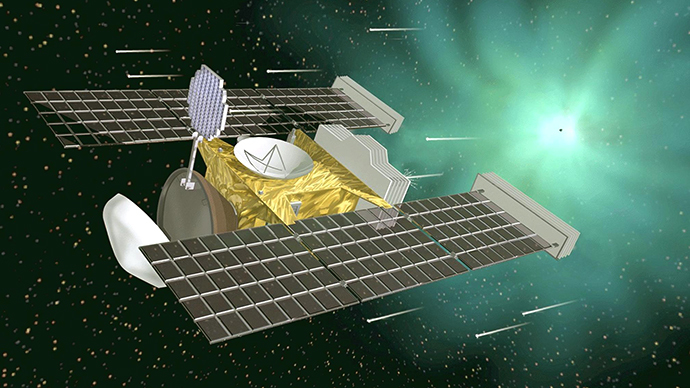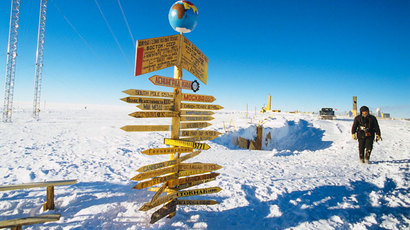Star dust brought to Earth originated beyond our solar system

NASA’s Stardust robotic mission which gathered samples from the flyby comet Wild 2 and brought them to Earth in 2006 has proven to be a success, with scientists saying some particles it collected originated from outside our solar system.
“They are very precious particles,” physicist Andrew Westphal of the University of California, Berkeley said in a Thursday statement. Westphal has been leading the research ever since the samples were delivered to Earth eight years ago.
So far seven microscopic particles collected from Stardust aerogel traps are likely to be first samples of interstellar dust delivered on Earth for research – and 30,000 volunteer citizen-scientists dubbed “dusters” of the Stardust@home project are still examining the optical microscope image scans of aerogel in search of more stardust.
“The numbers and sizes of dust grains were not what we'd expected, and many seemed to have come from strange directions,” Anton Kearsley, a microanalyst who took part in the study at the Natural History Museum in London, told The Guardian. “Only by careful plotting of impact directions was the team able to identify the seven particles that must have come from outside the solar system,” he said.
The Stardust comet-chaser was launched back in 1999 to collect dust from the tail of Comet Wild-2. Seven years later the Stardust capsule successfully landed by parachute in the Utah desert, USA.
Westphal said the particles look very different from each other, as some of them resemble fluffy snowflakes while others were broken up or even vaporized due to their high speed, up to 15 kilometer per second, when they hit the gel traps.
Four other particles got stuck in thin aluminum foils built into the detectors, Rhonda Stroud at the Naval Research Laboratory in Washington DC told The Guardian. “They were splattered a bit, but the majority of the particles were still there at the bottom of the crater,” she said.
The scientist revealed that the two largest recovered particles contain olivine, a crystalline magnesium-iron-silicate mineral that forms in the discs around stars.
“We seem to be getting our first glimpse of the surprising diversity of interstellar dust particles, which is impossible to explore through astronomical observations alone,” Westphal said.
Yet even the biggest samples of interstellar dust are thousandths of a millimeter across and weigh mere millionths of a millionth of a gram.
Two particles that left distinct traces in the aerogel were given proper names, Orion and Hylabrook.
The particles found so far could be considered ‘young’ by space standards, no older than 100 million years old or even younger than 50 million years.
The aerogel traps captured both cometary and interstellar dust, yet for scientists the latter presents much more interest as such particles could be remnants of supernova stars that exploded millions of years ago.














